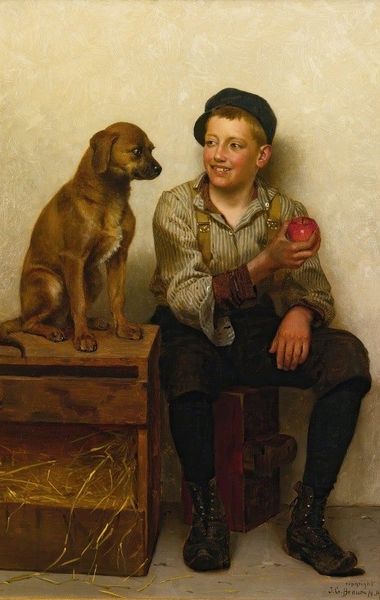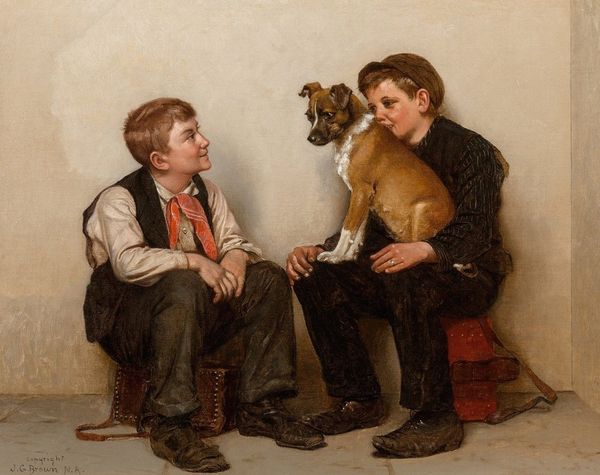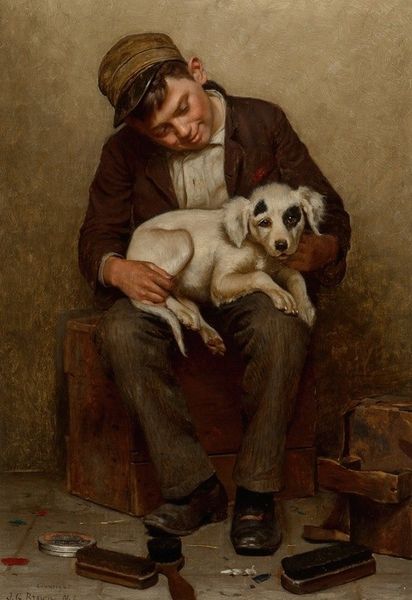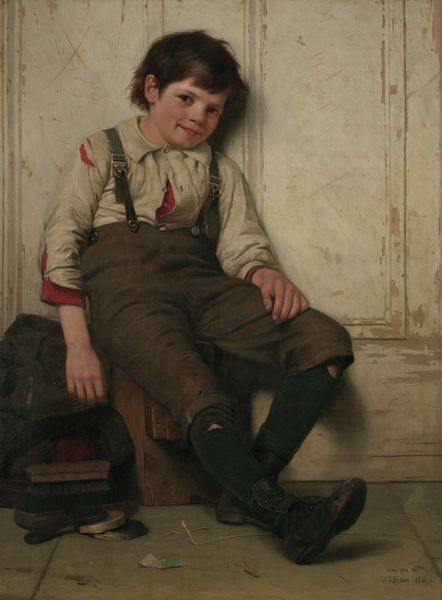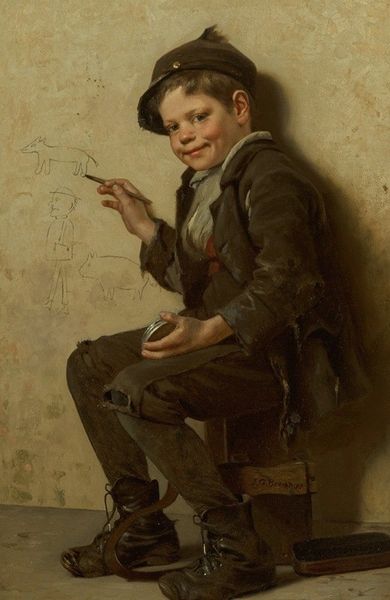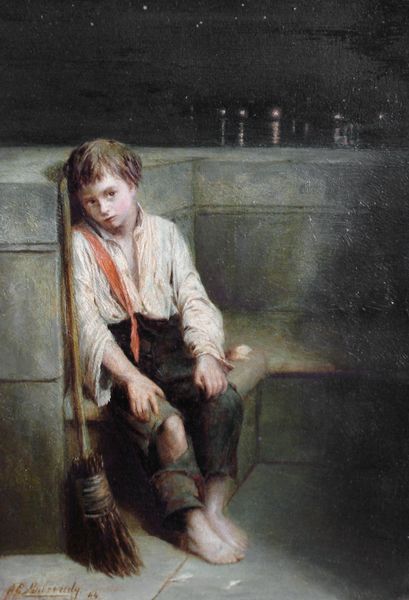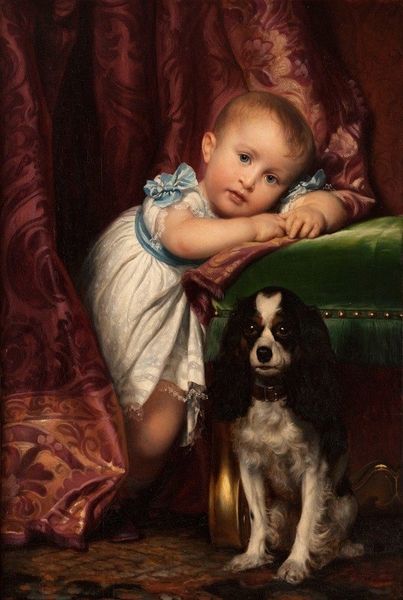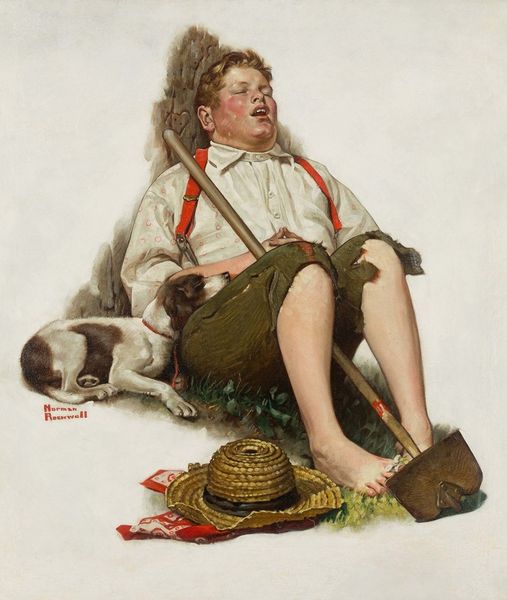
Copyright: Public Domain: Artvee
Editor: So, here we have John George Brown's "Shoeshine Boy," painted in 1903, rendered in oil. It’s immediately striking, almost melancholic, despite the boy's apparent youth and the presence of the puppy. I'm curious, what aspects of this painting stand out to you from a historical point of view? Curator: Well, given its title and the clear depiction of a working-class child, one must immediately consider its place within a longer visual history depicting labor, poverty and childhood. How does Brown present this child’s labor, his socioeconomic position? Is it ennobling, sentimentalizing, critical, or something else entirely? What role might images such as these have had at the time in shaping public perceptions, influencing social reform or policy, or perhaps even perpetuating existing inequalities? Editor: That’s fascinating. So, it’s less about the individual and more about how the image functions within society at large? Curator: Exactly. We must remember the context: Early 20th century America was experiencing rapid industrialization and urbanization. Consider the rise of social documentary photography around this same time. Do you think that artists like Brown, though working in a more academic style, were also responding to these changing social conditions and anxieties about class and labor? Editor: It makes me think about how easily art can either critique or condone existing structures, simply through how they choose to frame a subject. This piece does appear somewhat sentimental. Perhaps its effect differs depending on the viewer and their own relationship with the ideas represented in the work. Curator: Precisely. And considering how that dynamic might shift across time – that’s the truly interesting work of the art historian. Thanks for that observation!
Comments
No comments
Be the first to comment and join the conversation on the ultimate creative platform.

